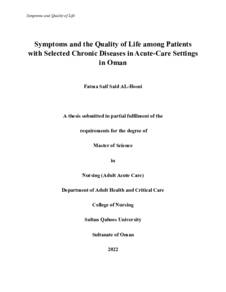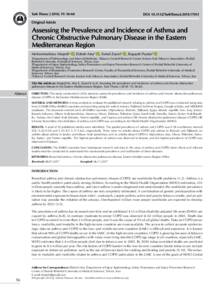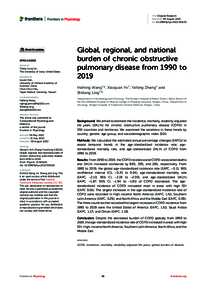Document
Symptoms and the quality of life among patients with selected chronic diseases in acute-care settings in Oman.
Publisher
Sultan Qaboos University.
Gregorian
2022
Language
English
English abstract
Background: Globally, chronic diseases are on the rise. These diseases tend to require lifelong
therapy and frequent medical surveillance. Advanced knowledge, technology and treatment
approaches have resulted in longer survival rates for patients suffering from acute and chronic
diseases. However, the symptoms for such diseases persist and affect the individual's whole life
and normal functioning. Symptoms and quality of life among patients with chronic diseases are
not adequately explored in Oman and Arab countries despite the increasing number of people
living with chronic diseases.
Aim: The main study purpose is to assess symptoms prevalence, severity, distress, quality of life,
and predictors of quality of life among patients with selected nonmalignant chronic diseases in
Oman. Chronic diseases include chronic obstructive pulmonary disease (COPD), end-stage renal
disease (ESRD) and chronic heart failure (CHF).
Method: A quantitative descriptive cross-sectional design was used and a convenience sample of
340 adult patients was recruited from two hospitals and one dialysis centre in the Sultanate of
Oman, Muscat Governate. The Memorial Symptoms Assessment Scale (MSAS) was used to
assess symptoms prevalence, severity, frequency, and distress while the 36-Item Short Form
Health Survey (SF-36) was used to assess quality of life. In addition, the Karnofsky Performance
Status Scale (KPSS) was utilized to estimate participants' functional status. Descriptive statistics
were applied to analyse symptoms profile and quality of life domains. Moreover, multiple linear
regression was used to predict the mean score of quality of life mental and physical domains.
Results: Patients with selected chronic diseases (COPD, ESRD, CHF) experienced an average of
7.4 (SD = 4.4) symptoms at the same time. The highly prevalent symptoms were lack of energy
Symptoms and Quality of Life
(60.9%), pain (57.4%), numbness (53.2%), difficulty sleeping (49.4%) and shortness of breath
(45.9%). The most severe symptoms were shortness of breath (53.2%), problems with urination
(51.9%), constipation (50.8%), difficulty sleeping (49.7%) and pain (46.2%). The symptom
"problems with sexual interests or activity" was found to be the most frequently occurring and
highly distressing symptom out of all the reported symptoms. Quality of life among patients with
selected chronic diseases was greatly affected. The mean score of the quality of life for the
physical health domain was 51.1 (SD = 24.5) and the mean score for the mental health domain
was 74 (SD = 16.5). Using multiple linear regression, being married and having high score of the
Karnofsky Performance Status Scale (KPSS) predicted higher scores on the mental and physical
domains of quality of life. In addition, a lower mental health domain score was found to be
predicted by having a higher number of total symptoms and having COPD, while a lower
physical health domain score was found to be predicted by older age, a higher total symptoms
number and higher distress level.
Conclusion: Patients with chronic nonmalignant diseases experience various symptoms that can
be severe, distressing and impact their quality of life. Therefore, understanding symptoms
experience, quality of life and its predictors among patients with chronic diseases is essential in
planning and implementing management plans. It is also critical when implementing
interventions to improve quality of life. In Oman, the knowledge generated from this study can
guide the clinical management and palliative care services for patients with chronic diseases.
Further, future studies are advised to explore symptoms cluster and consider the stage and
severity of the chronic diseases.
Member of
Resource URL
Category
Theses and Dissertations



